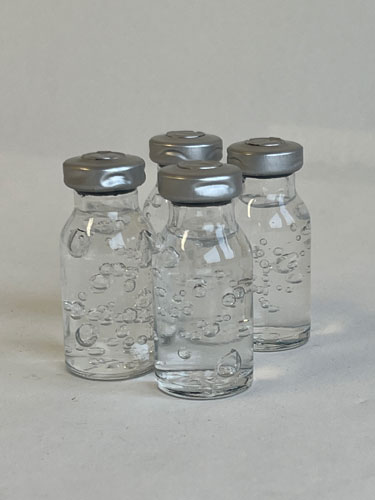Contact: Gary Chinga Carrasco
Oxygenated bioPolymers for biomedical applications
An increasing number of patients with chronic wounds have been reported, due to the population´s increasing age and resultant comorbidities like obesity, diabetes and venous insufficiency. The resulting morbidity and cost for the patient and the society is considerable. Healing of chronic wounds is a complicated process, characterized by elevated inflammatory responses, tissue breakdown, and colonization by predominantly anaerobe bacteria, and cause major challenges for the patient´s quality of life. Additionally, the extensive, often inappropriate use of antibiotics, for among others wound treatment, has resulted in an increasing resistance of pathogens against antibiotics. The cost implications for the world community are considerable. Hence, appropriate wound treatment requires optimized dressings that can maintain a prolonged moist environment, with adequate mechanical properties in moist conditions, with targeted antibacterial activity, as well as a barrier against wound bacteria. We propose in the OxyPol project optimized nanocellulose-based dressings as an inexpensive therapy option. In addition, alginates and chitosan can be used as additional biopolymers to add mechanical stability and potentially reinforce the antimicrobial properties of functionalized nanocellulose hydrogels and wound dressings. Hence, the OxyPol project will combine novel optimized nanocellulose from wood, alginates and chitosan, to form tailor-made gels for biomedical applications, focusing on wound dressings.
Hence, the OxyPol project will combine novel optimized nanocellulose from wood, alginates and chitosan, to form tailor-made gels for biomedical applications, focusing on wound dressings.
The manufacturing of optimized gels will be upscaled following good manufacturing practices (GMP), and pre-clinical studies will be conducted to confirm the potential of the innovative wound dressing products.

News in this project
Publications/Conferences
2023
Journal Articles
Chinga-Carrasco, G., Pasquier, E., Solberg, A., Leirset, I., (2023) Stevanic J.S., Rosendahl, J., Håkansson, J. Carboxylated nanocellulose for wound healing applications – Increase of washing efficiency after chemical pre-treatment and stability of homogenized gels over 10 months. Carbohydrate Polymers Volume 314, 15 August 2023, 120923. https://www.sciencedirect.com/science/article/pii/S0144861723003880
2022
Conferences
Gary Chinga-Carrasco, “Nanocellulose – The little giant in the biomedical area”. Invited keynote (In Spanish), NANOCELIA Workshop, June 27th, Girona, Spain.
2021
Journal Articles
Chinga-Carrasco G, Johansson J, Heggset EB, Leirset I, Björn C, Agrenius K, Stevanic JS, Håkansson J, Characterization and antimicrobial properties of autoclaved carboxylated wood nanocellulose. Biomacromolecules 22(7), 2779-2789
Knutsen MF, Agrenius K, Ugland H, Petronis S, Haglerod C, Håkansson J and Chinga-Carrasco G. Oxygenated nanocellulose – A material platform for antibacterial wound dressing devices. ACS Appl. Bio Mater. 2021, 4, 10, 7554–7562
Book chapters
Chinga-Carrasco G, Rosendahl J and Catalán J, Nanocelluloses – nanotoxocology, safety aspects and 3D bioprinting, In: Advances in experimental medicine and biology, Springer Nature Switzerland AG (2021), 50 pp
Research partners and funding:
Research partners
Oxy Solutions is the owner of the OxyPol project. RISE PFI and RISE Bioscience and Materials are the R&D partners.
Funding
The project is funded by the Research Council of Norway, through the Nano2021 program.
